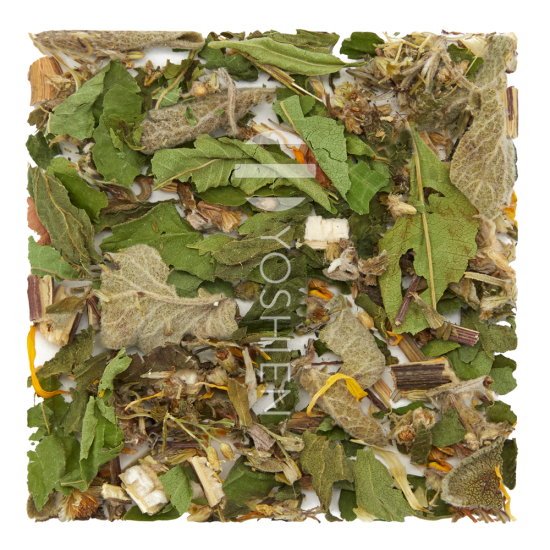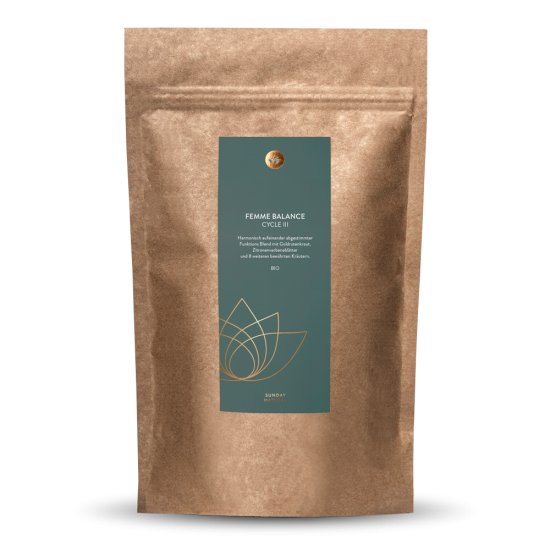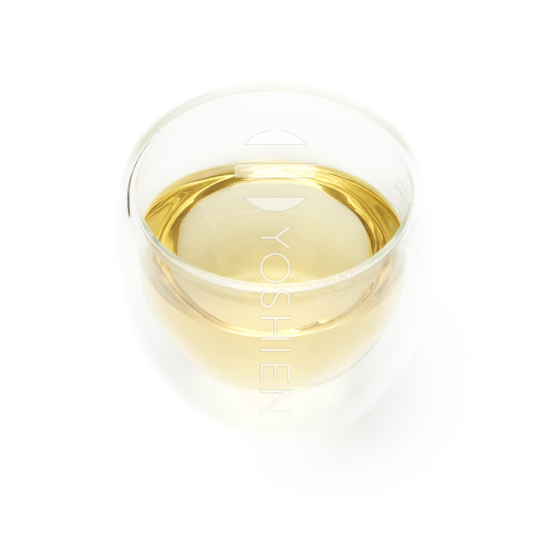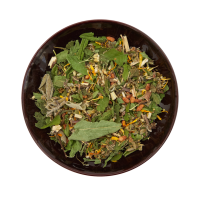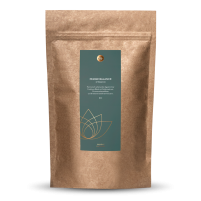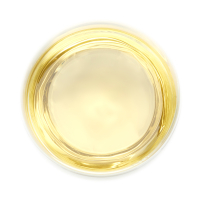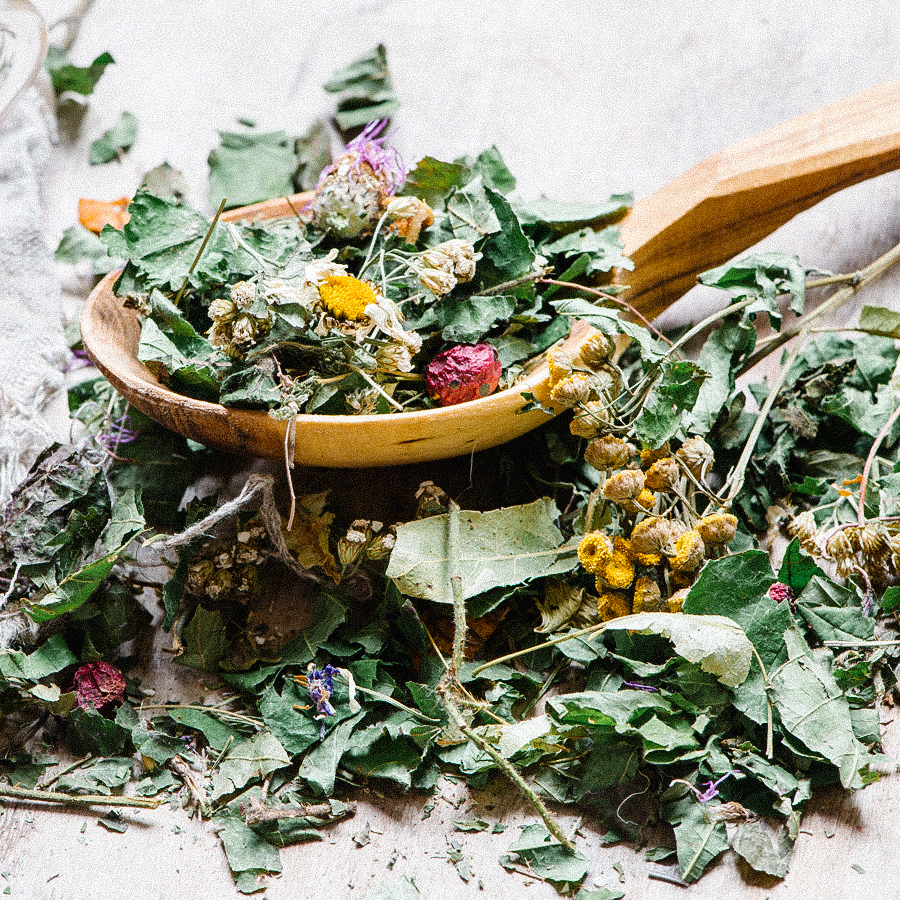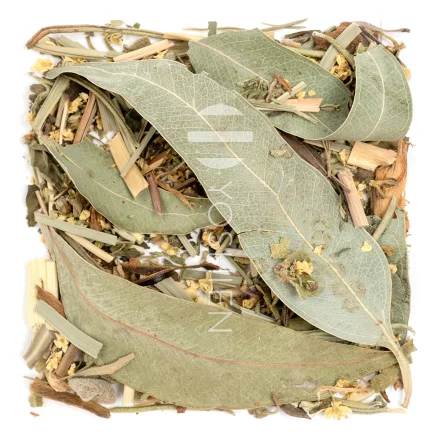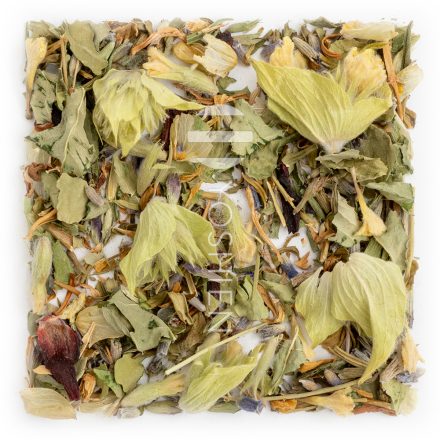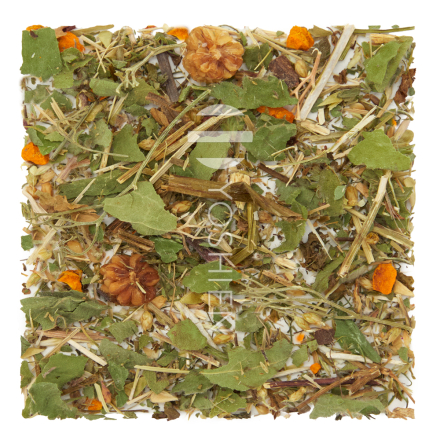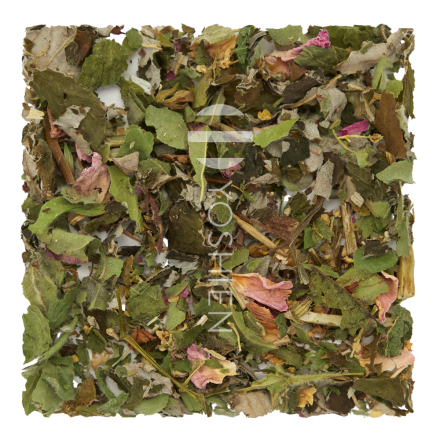VERBENA LEAF
Lemon verbena (Aloysia citrodora) – also known as lemon beebrush or verbena – is originally native to Argentina, Uruguay and Chile. It arrived in Europe in the 18th century, where it was first scientifically described as a distinct species. This perennial plant thrives best in nutrient-rich, well-drained sandy soil in sunny, sheltered locations. In spring, new stems sprout from the rootstock, followed from May by the elongated leaves, which grow in whorls of three along the stem. At full maturity, they exude a pleasant, intense lemon scent. From August onwards, delicate white flowers with four small petals each appear, adorning the plant well into the autumn.
GOLDENROD
Goldenrod (Solidaginis virgaureae) is an agricultural crop which has been recognised for its various uses for centuries. The introduction of goldenrod to Europe took place in the 17th century, and since then, it has thrived as an invasive neophyte in the sparse forests and dry woodland meadows of Europe and North America. This medicinal plant, which announces the end of summer with its vibrant yellow flowers, can also be used as a natural dye.
ROASTED RICE
For "puffed rice" or Genmai (Oryza sativa L.), unhusked but polished rice is used. Teas refined with it become more digestible and nourishing at the same time. According to a Japanese legend, the rice accidentally fell into the tea that was being roasted and has been a popular combination ever since. The cultivation of rice began over 8000 years ago in what is now China; from there, it steadily spread as a wild and cultivated plant and is now an integral part of culinary culture on every continent and in every kitchen, in all its forms and colours.
FENNEL SEED
Fennel (Foeniculum vulgare) is one of the oldest herbs in continuous use worldwide. Its origins can be traced back to around 3000 BC in Mesopotamia, where it was cherished for its numerous health benefits. The ancient civilisations of Egypt, Greece and Rome also recognised and appreciated the remarkable value of fennel.
MUGWORT
Mugwort (Artemisia vulgaris) belongs to the Artemisia family and is one of the oldest known herbs. Originally, mugwort (Artemisia vulgaris) comes from Central and Northern Europe and from there spread across the Northern Hemisphere. It was named after a Persian queen around 400 BC; in addition, the herb was also dedicated to the Greek goddess Artemis and the Egyptian goddess Isis.
MEADOWSWEET FLOWERS
Meadowsweet (Filipendula ulmaria flores) has many names and has been highly valued since ancient times. It prefers to grow near water and can be found in the northern hemisphere from Europe to the temperate latitudes of Asia. In the third millennium BC, meadowsweet was brewed in English beers, and in the early modern period, it was simmered into wine. Scarcely documented in writing during the Middle Ages and antiquity, records of the plant in herbalism are only found from the 12th century onwards.
SAGE LEAF
Sage (Salvia officinalis) belongs to the mint family (Lamiaceae). It is found worldwide, except in Antarctica and Australia, and is one of the most species-rich genera among flowering plants. Valued by herbalists since ancient times, sage remains an indispensable part of both culinary traditions and herbal medicine.
YARROW
A remarkably resilient perennial, yarrow grows throughout Europe and northern Asia, extending as far as the Arctic Circle. So hardy it often remains visible above ground even in winter, it is a plant with a long and storied tradition in herbalism. Yarrow's legacy is rooted in ancient Greek mythology, which holds that the hero Achilles used the herb to treat his soldiers. This legend is immortalised in yarrow's botanical name, Achillea millefolium.
NETTLE
The nettle (Urtica dioica, Urtica urens) deserves a place of honour among herbs. With around 70 species found across the globe (everywhere except Antarctica) it is hardy, undemanding, and remarkably effective. It thrives in close proximity to humans, and numerous butterfly species depend on it for survival. Already known in antiquity, nettle was believed to ward off evil.
MARIGOLD PETAL
The marigold (Calendula officinalis) belongs to the plant family Asteraceae (daisy family) and is particularly widespread in Europe. With its bright yellow and orange flowers, it is especially eye-catching and commonly found in many gardens. The petals are the most often used part of the plant, traditionally dried for use as a tea or as an extract for external application.



